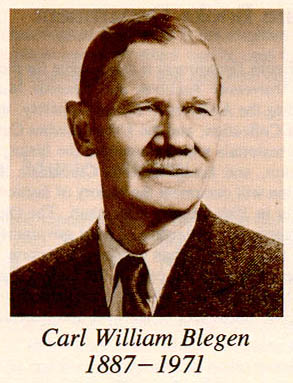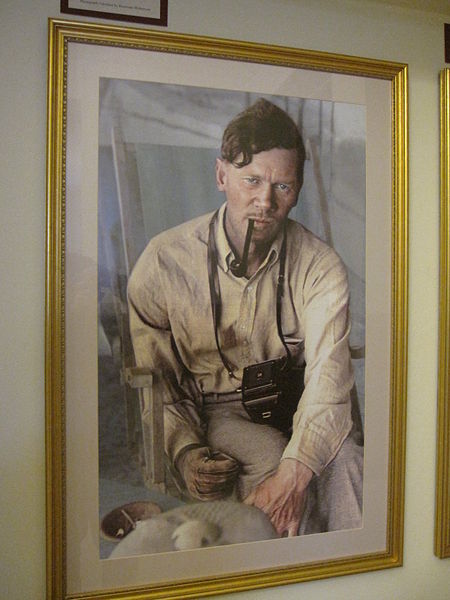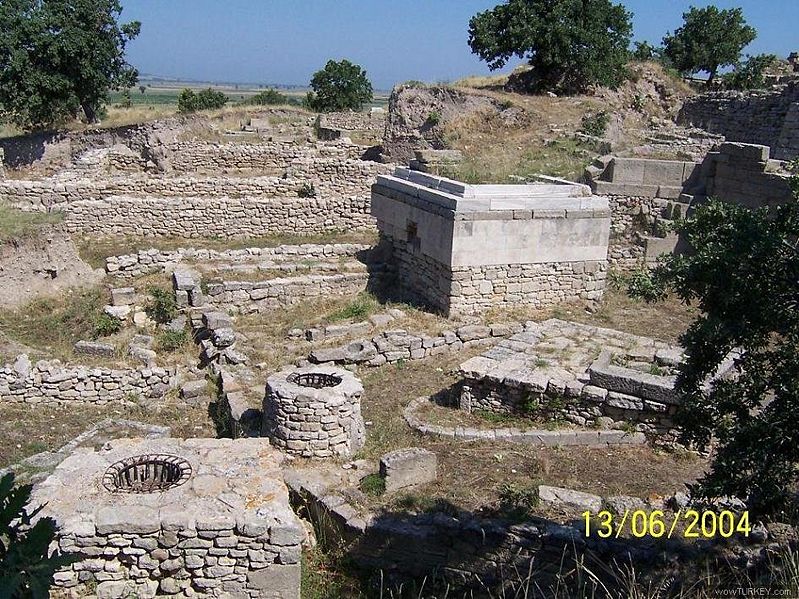<Back to Index>
- Archaeologist Carl William Blegen, 1887
- Composer Wolfgang Amadeus Mozart, 1756
- Shah of Persia Abbas I the Great, 1571


Carl William Blegen (January 27, 1887 – August 24, 1971) was an American archaeologist famous for his work on the site of Pylos in modern-day Greece and Troy in modern-day Turkey. His work produced numerous artifacts, including tablets with inscriptions in the Linear B script previously discovered only in Crete, as well as a magnificent Mycenaean palace at Pylos. Blegen's work at the Troy site initially suggested that the city had been destroyed by natural disasters, contradicting the account in Homer's Iliad. His further research, however, identified the Troy of approximately 1250 B.C.E., which was destroyed by fire and also contained evidence of extensive warfare, as King Priam's Troy, validating Homer's epic. Blegen, thus, contributed greatly to our understanding of these ancient cultures, previously remembered only in literature.
Carl William Blegen was born in Minneapolis, Minnesota on January 27, 1887, the son of John H. and Anna Blegen, Norwegian immigrants. His father was a professor in German and Greek at Augsburg College in Minneapolis, and his mother had been a successful businesswoman before their marriage. Carl had two sisters and three brothers, one of whom, Theodore, became a noted historian specializing in immigration history particularly of Norwegian Americans. His childhood was spent in the scholarly community not only of his immediate family but supplemented during vacations in the extension of the Augsburg faculty community at Lake Minnetonka, called Saga Hill. His background thus prepared him for a scholarly career.
Carl earned his bachelor's degree from the University of Minnesota in 1904 and started graduate studies at Yale University in 1907. He became a fellow (1911–1913) at the American School of Classical Studies in Athens, Greece. It was during this time that Blegen worked on excavations at Locris, Corinth, and Korakou.
When World War I broke out in Europe, Blegen became involved in relief work in Bulgaria and Macedonia, for which he received the Saviors Order from Greece in 1919. Following the war, he returned to the United States to complete his Ph.D. at Yale (1920). He then became an assistant director of the American School of Classical Studies, Athens in 1920, carrying that duty until 1926. During that period he led excavations at Zygouries, Phlius, Prosymna, and Hymettos. In the summer of 1924 he married Elizabeth Denny Pierce in Lake Placid, New York, a fellow archaeologist whom he had met in Greece. She became an indispensable partner in his work.
In 1927, Blegen joined the faculty of the University of Cincinnati, becoming a professor of classical archaeology. He remained in that position for the next 30 years, until his retirement in 1957. During that period he directed the university's excavations of the mound of Hisarlik, the site of Troy, from 1932 to 1938. They were followed by those at the palace of Nestor in Pylos, Greece in 1939, and resumed from 1952 to 1958.
Blegen received honorary degrees from the University of Oslo and the University of Thessaloniki in 1951, an honorary D.Litt. from Oxford University in 1957, and an honorary LL.D. from University of Cincinnati in 1958. Further honorary degrees came in 1963: Litt.D. from Cambridge University, and others from the University of Athens, Hebrew Union College, Jewish Institute of Religion in Jerusalem. In 1965, the Archaeological Institute of America awarded Blegen the Gold Medal for archeological achievement.
Carl Blegen died in Athens, Greece on August 24, 1971. The library at the University of Cincinnati was rededicated in honor of Carl Blegen in 1983. Blegen
Hall, on the University of Minnesota west bank campus, is named after
Carl's brother Theodore Blegen, who served as professor of history and
dean of the graduate school at the University of Minnesota.
